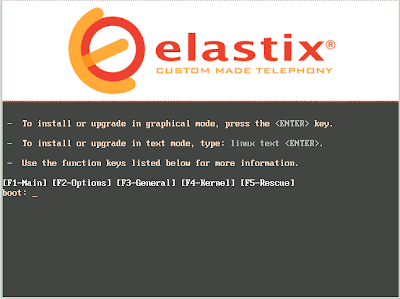


Also, installing via a CD/DVD is not ideal, as I have no CD/DVD drive (and I want to see if I can get this working via a Bootable USB drive). I did try other tools such as Rufus 2.7, Win32 Disk Imager, ISO2USB, and dd for Windows, though most rendered my USB not bootable at all (Rufus worked OK, but still got stuck at the CentOS7 part). I did some research but a lot of the solutions I've noticed are using the dd command in Linux to make a Bootable USB for just CentOS7 because it is (was?) known that UNetbootin did not properly make a Bootable USB for CentOS7, and I can't seem to find anything that would assist in making the Elastix 4.0. As a personal goal, I would like to get this working via a Bootable USB. Installing it via a VM also seems to work without hassle.
Elastix on centos 7 install#
iso and used Rufus to make a Bootable USB, and then booted the installation using the Troubleshooting -> Install CentOS 7 using Basic Graphics … but according to them, that apparently corrupted something else and then they opted to just use a DVD.ĮDIT #2: I tested this, and making a Bootable DVD of the. This is where I am stuck and cannot proceed.ĮDIT #1: I signed up for the Elastix forms, and someone else also had this issue. Then the install proceeded to do its checks for CentOS7, but ended up getting stuck and gave me an error message "dracut-initqueue: Warning: Could not boot." and "Warning: /dev/root does not exist". It gave me the "Install Elastix 4" menu, so I hit enter and waited. I put the now Bootable USB into the PC I want to put Elastix 4.0 on and started it up. iso from " " (Elastix-4.0.74-Stable-x86_64-bin-10Feb2016.iso) I used UNetbootin to create my Bootable USB for Elastix 4.0.
Elastix on centos 7 windows 10#
My main PC is Windows 10 Pro, so after downloading the latest Elastix 4.0. I was attempting to install Elastix 4.0 on a home PC via a Bootable USB, but never had any luck getting it to install past the CentOS7 part (it kept giving me a "Warning: /dev/root does not exist" error).


 0 kommentar(er)
0 kommentar(er)
